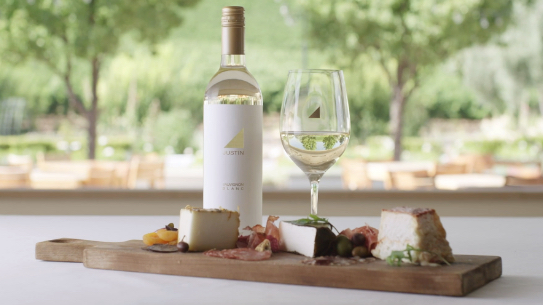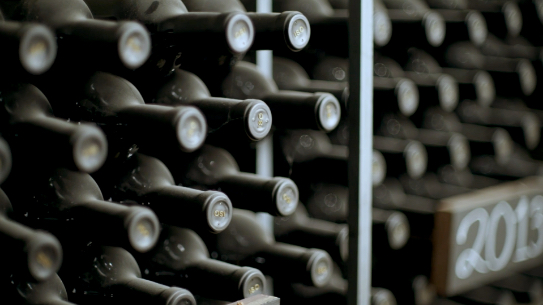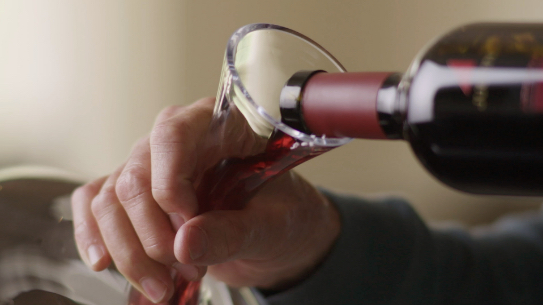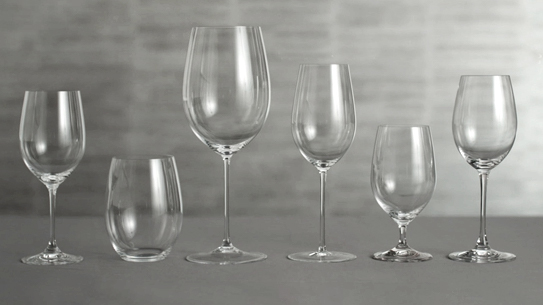Wine tasting can seem a bit daunting at first. A lot of people see it as some kind of test, with right and wrong answers, rules, and grades. Luckily, there’s a better approach—think of wine tasting as an incredible opportunity to start identifying and defining your own personal preferences. That’s it. No wrong answers, no judgment, and the only rule? Enjoy yourself.
As for technique, one that we find particularly useful is called “The Five S’s,” which stands for See, Swirl, Sniff, Sip, and Savor. Let’s unpack what each one means.
See
Hold your glass of wine up against a piece of paper or white table cloth so you have a nice clean backdrop. Look at the color of the rim—the area around the edges where the wine meets the glass. This will tell you the age of the wine. For example, when looking at our JUSTIN Reserve Cabernet Sauvignon, you’ll see that it’s bright with a nearly opaque core, and the rim is a medium purple-ruby color, which indicates a young, fruit-forward wine.
Swirl
Swirl the wine in your glass to aerate it and release the aromas. These are created by compounds called esters, which form during the winemaking process. Swirling the wine breaks up the esters, releasing the aromas into the glass.
Sniff
Put your nose into the glass and inhale deeply. See if you can separate the aromas that come from the grapes—like fruits, herbs, and floral notes—and those that come from the winemaking process, such as vanilla and cedar. Older wines also tend to have more earthy notes of leather and autumn leaves.
Sip
As you sip the wine, roll it over your tongue and aerate it by slurping just a bit, then let it touch your teeth and cheeks. This will help engage all your taste buds so you can identify both the fruity and savory elements of the wine. Be sure to sip twice, as the first sip can often shock the palate, especially if the wine is higher in alcohol.
Savor
Last but certainly not least, it’s time to savor. This is where what we call the “finish” comes into play. Look for length and intensity in the makeup of flavors.
As for the final verdict, if the wine leaves with you an overwhelming desire to take another sip, you’ve found a winner. Now there’s nothing left to do but raise a glass, enjoy, and repeat.
Cheers!








